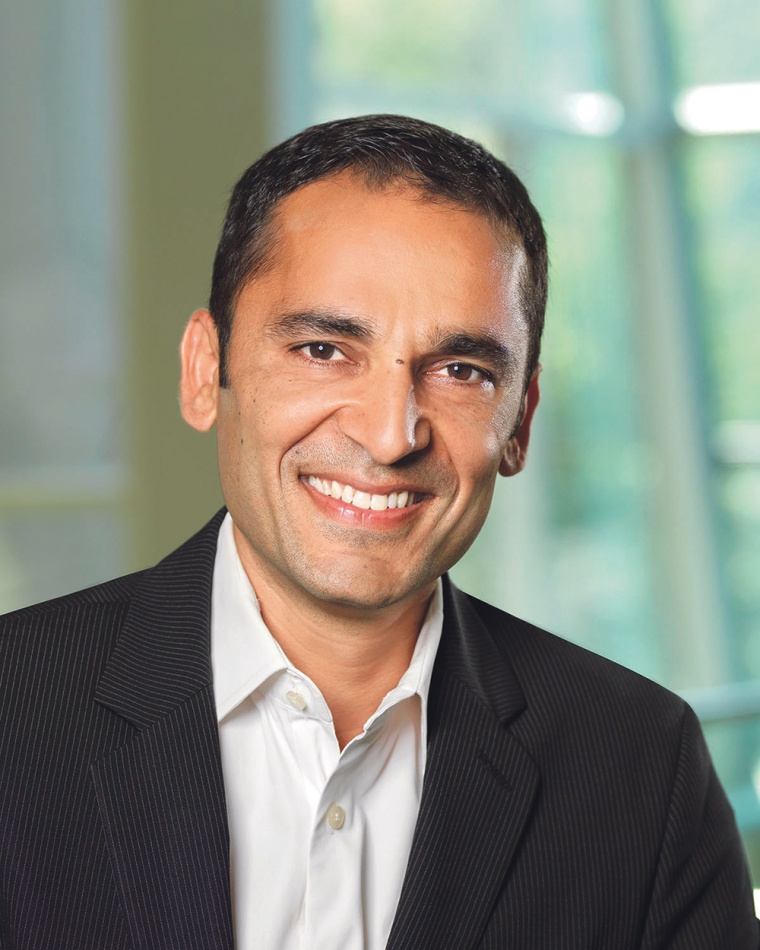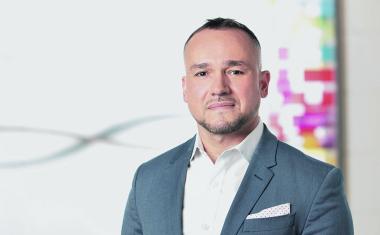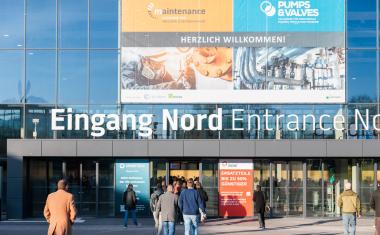Significant Value Creation


In September 2014, Merck announced the €13.1 billion acquisition of Sigma-Aldrich, which by mid-August has received antitrust clearance from all relevant jurisdictions including the US, Japan, Brazil, and China, and has some pending final divestiture commitments in the European Commission. The deal is regarded to create significant transformational opportunities for the life science business of the German pharma and chemicals company and will establish one of the leading players in the €100 billion global life science industry. Dr.Udit Batra, CEO of Merck’s Life Science business, who will lead the combined activities of Merck Millipore and Sigma-Aldrich after the closing of the acquisition, speaks with Dr. Michael Reubold about the rationales for the acquisition and the trends the company will support in the global life sciences market.
CHEManager International: The M&A carousel in the global life science industry is turning fast driven by an ongoing consolidation in the pharma sector, and the life science equipment industry makes no exception. What are the reasons for this consolidation?
U. Batra: For the pharma industry, one key driver is the growing amount of genericization of blockbuster and other drugs coming off patent. Another is the increasing regulatory requirements which are lowering the approval probability and delaying the approval time of new drugs. Both factors are putting serious challenges on the companies’ R&D pipelines. There are positive trends like the growth of biologics and emerging market growth. But here again, in countries like China regulations can change quite quickly and are, thus, challenging.
If you translate that to our industry, I see the genericization challenge for the pharma industry not necessarily as a negative for our industry. In particular I'm speaking of biologics because the market for biosimilars is growing in many emerging countries. Our goal is to supply solutions to customers who provide medicines and vaccines to people everywhere. For instance, our disposable bioreactor systems have low capital intensity and can easily be implemented in emerging markets.
I do also believe that the increase in regulations is beneficial for us, although it creates a burden because there is backward integration of regulations to the supplier industry. But as this requires more investment and more training and readiness for inspections, it is an advantage at the end since the market entry barrier is getting higher so that not everybody can enter this business.
Consolidation often has cost cutting as a driver. Has this also been a rationale for the acquisition of Sigma-Aldrich?
U. Batra: When you consolidate, the costs come under pressure, and R&D is no exception. However, I see the consolidation in the pharma industry again not as a negative, because our consumables business scales with the number of projects, meaning the number of products in the pipeline, and not to the total cost base of R&D.
If you look deeper, the number of molecules that pharma is developing actually increases. So, nobody cuts the molecules, they streamline the infrastructure around it. As we probably constitute between 5 and 10 percent of the total R&D spending of the pharmaceutical industry, that is not a huge cost pool for them to go after.. Clinical development is still the bigger part of the costs. Laboratory supply is not. Our products are largely on the consumables side and consumables continue to grow.
What about consolidation on the supplier side? Does size matter in this market?
U. Batra: Absolutely, scale matters in research. One of the critical factors for our customers is simplicity. They want all the products from a single interface, while somebody else should deal with the complexity. And this drove our thinking, especially on the laboratory side. There, scale absolutely matters, because that scale then makes it an entry barrier for competitors. The amount of investment required to handle so many products and deliver them to the customer the next day is massive. Here, Sigma-Aldrich is a key player, because they have perfected this business of ecommerce, supply and distribution working together. So, we see consolidation in particular in the laboratory space as quite beneficial.
What about the overall fit of this acquisition? Is there any overlap?
U. Batra: Very little, almost none. As an indication, the clearance we received from the competition authorities is only subject to a few divestment conditions in Europe.
That said, let me take you back to the rationale for the acquisition. The combined life science market that we will be in is about €100 billion in size and it grows between 3 and 5 percent per year, which is 2 to 3 percentage points ahead of the global economic growth. Leaders in this market have margins in excess of 22 percent. This is without a doubt a highly attractive market.
You can break down the €100 billion market into three segments. First, the research segment accounts for roughly €12 billion. It includes academic customers and pharmaceutical R&D customers, not unlike our colleagues at Merck Serono, who use a wide portfolio of laboratory chemicals, biologics and reagents. That market has been growing at around 3 to 4 percent, a bit slower than the average market because governments have pulled out funding after the recent economic crisis and the market has slowed down a little bit. But it is starting to pick up especially in the US and the trend is very good in the future. There are over 3,000 R&D projects in the pharma pipeline that are viable projects, and those customers use our products. The FDA approved about 41 new products last year. This was double the number versus the previous year and one fourth of those products are biologics, which require a different level of understanding and a lot of our tools. So, I am completely confident that this market is going to remain attractive and continue to grow because the fundamentals are very good.
The second market segment we play in is the processing sector, which accounts for roughly €44 billion growing at 6 to 7 percent per year. This is the market of bioreactors and downstream equipment like our filtration products used for the manufacturing of APIs or formulated products. Together in this space Merck Millipore and Sigma- Aldrich are very complimentary. Again, if you look at the end market in particular, you find that the sales of monoclonal antibody based therapeutics grew at about 17 percent over the last five years. In order to manufacture monoclonal antibodies customers often use our single-use reactors and filtration products. The second trend in that market is biosimilars. One hundred fifty or so biosimilars have been approved in the last five years, which is very good for the demand for processing equipment that we supply. And again, the trends for the future look very good.
And the third segment is called the applied market. Admittedly Sigma-Aldrich has a stronger presence here. That market accounts for approximately €44 billion and is the slowest growing out of the three at roughly 2 to 3 percent. In that market we include adjacent markets, for instance, food and beverage. This segment is seeing a lot of growth, especially for our types of chemicals and approved regulatory products, because the amount of regulations in food and beverage is increasing quite dramatically. As a consequence, they need testing equipment not dissimilar to pharmaceuticals. It is only a matter of time until they get there and that is making this market attractive. The diagnostics industry is also a customer in that segment with molecular diagnostics growing between 16 and 20 percent annually.
So, all three end markets, process solutions, research and applied have been growing over the last few years and also have robust future growth trends.
Let us go back to the fit. You said almost no overlap…
U. Batra: Right, highly complementary! The combined company will be able to serve life science customers around the world with a highly attractive set of established brands and an efficient supply chain that can support the delivery of more than 300,000 products.
In that attractive market I just spoke about, you have Sigma-Aldrich and Merck Millipore. Both players have been growing in line with the market for several years. Last year Merck Millipore grew 4.5 percent, Sigma-Aldrich grew slightly shy of 4 percent. And year to date in 2015 both organizations are continuing to deliver solid growth. Sigma-Aldrich’s profitability is 30 percent, ours is 25 percent. If you bring these two strong companies together, what do you get?
You can look at it from three angles. One is the portfolio, the second is capability and the third is geography.
In looking at the portfolio, the research market Sigma-Aldrich has the widest portfolio in the industry, about 250,000 products. They have whatever researchers need at a fine chemical level, while Merck Millipore, in addition to a strong chemical portfolio, has very targeted innovative products that for example allow scientists to look at individual genes and leave a cell viable for further use. Nice portfolio match, very little overlap. Together, Merck Millipore and Sigma-Aldrich will offer their customers a complementary range of products across laboratory chemicals, biologics and reagents.
In pharma and biopharma production, Sigma-Aldrich will complement Merck Millipore’s existing products with additions along the entire value chain of drug production and validation.
If you look at geography, the combined company will have a turnover of about €4.8 billion, a pretty large player, which will have a geographic footprint that is balanced amongst EMEA, North America, and the rest of the world, roughly 33 percent each. And if you look a bit deeper, what you see is a significant value creation. Where Sigma-Aldrich is strong, for example, in the North American research market, Merck Millipore is not as strong, so we can take Merck Millipore products there. Where Merck Millipore is and Merck has historically been strong, for example in Latin America, Sigma-Aldrich is not and now we can introduce Sigma-Aldrich products there. There is a huge possibility for value creation by taking our products to customers who currently don’t have access to them.
And then finally, from a capability perspective, I would say we leverage each other. Where Merck Millipore spends 6 percent of sales in R&D, Sigma-Aldrich spends a little bit less, but they are superb at supply chain excellence and e-commerce.
I think three capability elements drive value in our segment. First, we need people who are trained in technical degrees and have the curiosity to learn about technical aspects, because our customers demand it. And here at both companies roughly one-third of the workforce have technical degrees and the rest get trained. Second, because we will have such a large number of products, over 300,000 products, you want to simplify the customer interface. Sigma-Aldrich has a world-leading e-commerce interface and into that interface we will bring all the Merck Millipore products, which will be a huge benefit for our customers. And then finally, we should have an organization that is able to deal with complexity. There are so many products, so many supply chains, so many distributors, and so many customers; you don’t want the complexity to go to your customer. And here again Sigma-Aldrich is best in class.
So you take those capabilities and put them together with large buckets of innovative products, it is just superb! Many more customers will have access to them. That gives me excitement and a little bit of worry as well, because it seems so good on paper that you need a strong strategy, the right teams and a methodical approach to take this combination beyond and to customers.
Too good to be true?
U. Batra: Almost. But in the end you have to prove to your customers you can really match their expectations. The fit is perfect, this I am convinced of. The question is: how are we going to execute it? I expect that the integration will take about six to nine months because it is complex. I would say this is a reasonable timeframe, starting from the closing, which we expect very soon, when the new organization goes live. And by that I don’t mean everything is done, but the broad parts would be there. And, make no mistake, there is a lot of work on integration planning that happens in parallel, but during this time the most important thing is focus on the customers, on delivering the products, and on communicating. Absolutely the number one priority is customer focus.
You spoke about geographies. What challenges do you see in regional crises and what expectations do you have for emerging markets?
U. Batra: While we have a geographic footprint that diversifies our risks rather nicely, we are absolutely exposed to it. Whatever happens in regions like Russia and the Ukraine or the Middle East impacts our business. The academic funding goes down as the economy slows down. We saw this in the United States over the last few years, and only now it starts to recover. In Japan, the academic funding has taken a huge slump that shows up in our business. So, I feel the macroeconomic situation impacts us, especially on the academic side, less on the industry side. And up to now, we had less exposure to the academic side, but with Sigma-Aldrich we will have a larger exposure. So that will be a challenge.
If you are in emerging markets that have above-average growth, you are also subject to some volatility. If you don’t want to leverage the growth of emerging markets and deal with volatility, then don’t be there. Compared with emerging countries, the still big markets, the US, Europe and Japan (Asia) , have lower but more predictable growth. There is no world -- where I can see --that Europe or the United States or Japan (Asia) are not important. The big decisions of pharmaceutical customers on the type of manufacturing facilities that they will build are made in the headquarters of the multinationals in Europe, Japan and the United States. That is not going to change overnight. The largest amount of R&D spending in the world still remains in the United States.
But that said, the investment dynamics in countries like China are mind-blowing. I will give you three examples from a recent visit to China with my leadership team. Novartis is investing $1 billion in an R&D facility in Shanghai. This sheer ambition of a multinational to go into China and say, “I want to be big here” - they must know something. And even if they don’t, they will create something. Second, we had a chance to visit a national center for protein analysis. They had 14 mass spectrometers, one next to the other. And that also shows the amount of ambition that they have. And third, we visited this company called WuXi AppTec and they are going to put roughly 15 single-use bioreactors in parallel. Not one, not two, but 15 two-thousand-liter single-use bioreactors. Many of our multinational customers take a long time to decide buying one. The ambition in China is a few orders of magnitude higher. This is a ‘think big and act big’ mindset. And we need to be part of it. So I guess it will not take long before we will be acting in China in a meaningful way.
After the integration, will you keep the brands Sigma-Aldrich and Merck Millipore and operate them under the Merck Life Science umbrella?
U. Batra: We haven’t yet fully sorted this out but somehow it will be Merck and within our Life Science business. Below this corporate brand it we would be short-sighted to remove any of the brands that have been known to many customers, be it Sigma-Aldrich, be it Supelco, be it Millipore, be it SAFC or others. Nonetheless, we cannot keep over 70 brands as we currently have. It has to be a handful and below that we can put any sub-brand we like. So we are going through a process by which we will organize them in a logical way, while ensuring our customers can still utilize the many innovative products we both provide.
Are there some white spots left in your portfolio where you would do bolt-on acquisitions?
U. Batra: We would not survive if we were not always looking to collaborate. But that said, we have done the largest acquisition in Merck’s history and we need time to digest this once closed, to bring the parts together. There is no focus on doing many more bolt-on acquisitions. There are very interesting ideas and as far as smaller collaborations are concerned, we will be happy to do them, but big acquisitions at this time are off the table.
Fast forward: what is your vision for the Merck Life Science sector?
U. Batra: We are in a wonderful business because we have the chance to solve problems for curious scientists and engineers. Our purpose is awesome: solving the toughest problems in life science by collaborating with the global scientific community. This purpose is embedded with the goal of helping to provide people all over the world, and especially in emerging markets, with access to medicines and vaccines. I mean, how exciting is that? That is my vision!
most read

ISPE Good Practice Guide: Validation 4.0
The Validation 4.0 Guide provides a comprehensive approach to ensuring product quality and patient safety throughout a pharmaceutical product's lifecycle.

Q1 2025 Chemical Industry: Diverging Trends
The first quarter of 2025 highlights a continued divergence between the European and US chemical industries.

Rugged Tablets: How to Successfully Digitize Hazardous Areas
Digital processes in hazardous areas? Durabook's rugged tablets are ATEX-certified for industrial use.

“Access to Talent is a Crucial Factor”
In an interview with CHEManager, Edgardo Hernandez, President of Lilly Manufacturing, explains the strategy behind the ambitious investment project.

Maximize the Potential of Spent Hydroprocessing Catalysts
A new approach is helping reduce waste, recover value, and deliver on sustainability goals.








